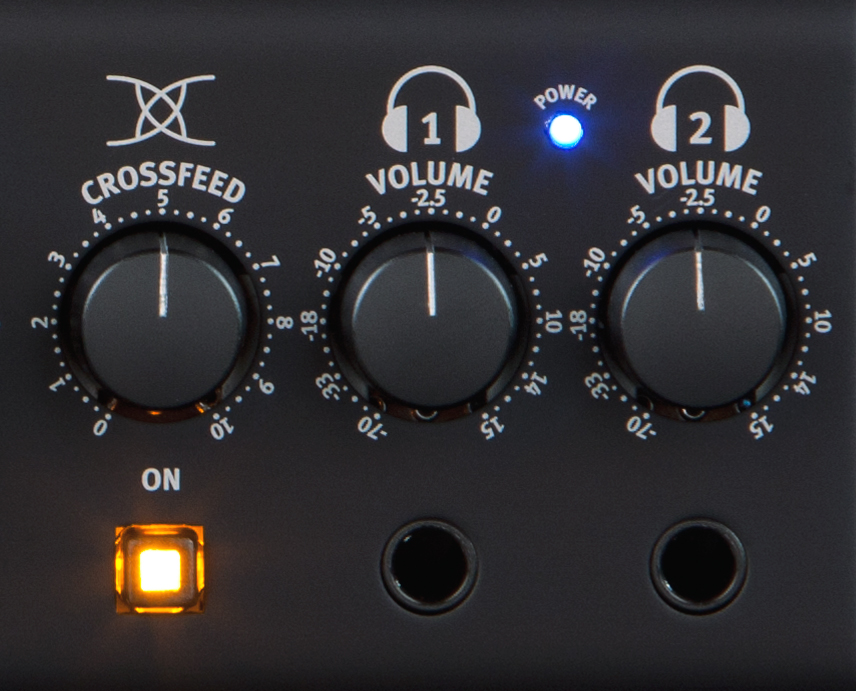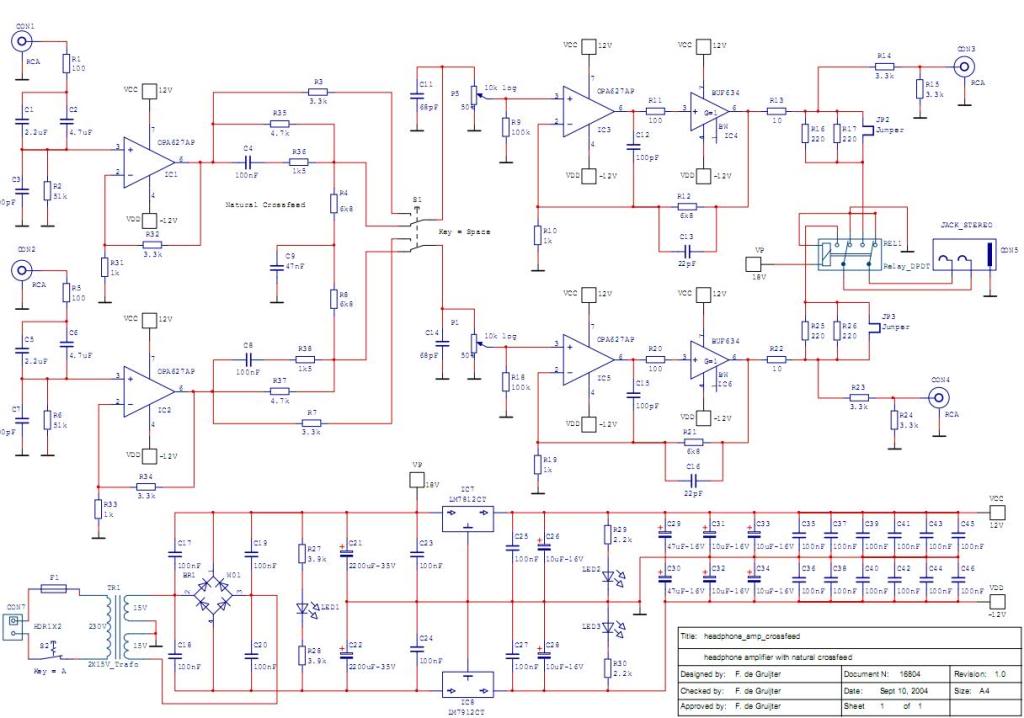


Input Impedance (Balanced / Unbalanced) 25K/25K.Frequency Response +0, -0.5dB from 20Hz to 20kHz +0, -3dB from 10Hz to 100kHz.Intermodulation Distortion 0.005% maximum, if the instantaneous peak power is 100 watts or less per channel with both channels operating for any combination of frequencies from 20Hz to 20kHz.Headphone Output Impedance 8-40 Ohms 40-150 Ohms 150-600 Ohms.Headphone Power Output High Selection: 1W Normal Selection: 250mW.The entire unit is housed in a beautiful polished stainless steel chassis that not only compliments the classic glass front panel, knobs and brushed aluminum end caps, but virtually any room decor. The crossfeed function is only needed for headphones listening True binaural recordings (recorded with mics on dummy or real heads) should avoid the use of crossfeed. No fiddling with checkboxes or dropdowns, Roon Tested devices are automatically identified and configured out of the box for a superior customer experience. Most songs are recorded only for loudspeakers listening so they should benefit from crossfeed.

Roon will recognize it and send it audio optimized for its capabilities. It has been profiled and tested by both Roon and McIntosh for maximum compatibility. It is one of many McIntosh products to receive Roon Tested designation from Roon Labs. A 5 step Bass Boost Control allows for further sound customization. Our patented Power Guard ® technology is included and will prevent clipping that could damage your headphones or speakers. The MHA150 is powerful and versatile enough to drive a pair of quality desktop or small bookshelf speakers via its 50 Watt stereo speaker outputs. It’s the same width as the MB50 Streaming Audio Player and the two can be combined to start building a complete system. The MHA150 is smaller than our other amplifiers, giving you additional flexibility to locate it almost anywhere in your space. Headphone Crossfeed Director (HXD ®) brings added dimension to your music in a natural sounding way but can be turned off depending on your preferences. Our proprietary MCT input has also been added to the MHA150 when paired with the MCT80 SACD/CD Transport, it offers a secure DSD connection for playback of the high definition audio on SACDs.įor connecting digital devices, an optical and coaxial input are included along with the USB and MCT inputs two analog inputs are also available. Our Autoformer ™ technology found in our large mono and stereo amplifiers has been adapted to produce three headphone impedance ranges of 8-40, 40-150 and 150-600 Ohms so that every headphone will receive the legendary McIntosh sound quality and performance.įor enjoying DSD and DXD files, the USB input accepts PCM signals up to 32-bit/384kHz and supports DSD64, DSD128 and DSD256 along with DXD 352.8kHz and DXD 384kHz. Like the MHA100, the MHA150 continues to take advantage of unique McIntosh technologies to create the best possible personal listening experience regardless of the headphones you use. The MHA150 contains the same feature set and performance standards but adds our new 2nd generation digital-to-analog converter (DAC) that provides support for DSD and DXD files to give you access to the latest in digital music.
#Headphones crossfeed software
Is there anybody around who could recommend a "working" and acceptable software ( preferably under Linux of course - Windows would work too of course).The MHA150 Headphone Amplifier is a worthy successor to the critically-acclaimed MHA100.

Beside that the actual crossfeed effect results only into a slight improvement. Both of them do introduce more losses then acceptable. These are supposed to improve the listening experience through your headphones.īauer at and Sox earwax. I am checking out Crossfeed/Binaural filters. I am playing around with my new headphones. As you might know I am not a fan of filtering.


 0 kommentar(er)
0 kommentar(er)
